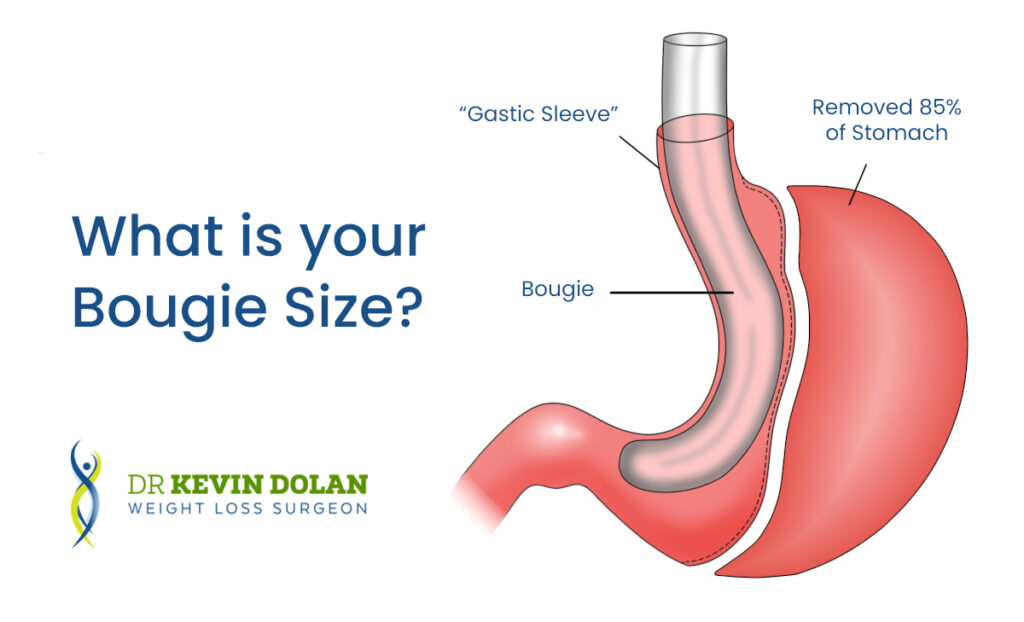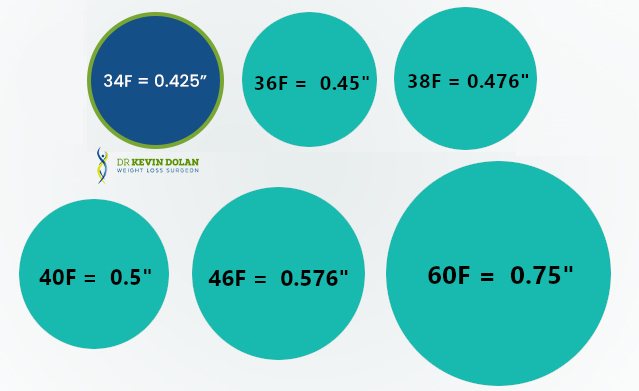
Sleeve gastrectomy is the most common type of weight-loss surgery and has proven benefits, but patients may need to ask a few questions to get clarity before they commit. One of these questions may be “does bougie size matter?”
Gastric sleeve surgery has been shown to cure diabetes, hypertension, high cholesterol and sleep apnoea in 75% of patients. Dr Kevin Dolan of the WA Laparoscopic and Obesity Surgery (WALOS) says gastric sleeve surgery results in loss of about 65% of their excess weight. It is also used for patients who have regained weight or had complications following gastric band surgery.
In the eyes of Dr Dolan, it is widely accepted that Gastric Sleeve Surgery provides the best quality of eating and the best quality of life of all the weight loss surgeries that have been performed. The problem, he says, is that not all surgeons are performing the same gastric sleeve surgery.
“Gastric sleeve surgery needs to be standardised so that all patients have the same operation. This will allow meaningful comparisons of gastric sleeve surgery with other weight loss operations.” says Dr Dolan.
What happens in a gastric sleeve procedure?
In sleeve gastrectomy, the surgeon removes the lower three-quarters of the stomach and uses special staples to join the remainder to form a tube-like structure shaped like a sleeve.
“This restricts the amount of food that can be consumed and, more importantly, reduces the amount of the hunger hormone ghrelin that the stomach produces,” Dr Dolan says.
“Gastric sleeve surgery makes the patient feel less hungry and fuller quicker, with small amounts of food.”
The effects of gastric sleeve surgery depend on the size of the sleeve – that is, the amount of stomach left behind.
What is a bougie and how does it help?
A bougie is a small cylindrical measuring instrument which is used by surgeons when performing gastric sleeve surgeries as a guiding tool. Its primary goal is to help determine the ideal size of the patient’s stomach after the procedure is complete, and guide surgeons towards making this happen.
A bougie is a thin, flexible tube that is inserted and used for various medical procedures. It is often used in weight loss surgery, specifically laparoscopic gastric sleeve surgery, as a guide for the surgeon to help create a small pouch at the top of the stomach.
During the surgery, the surgeon will use the bougie to measure the size of the pouch and ensure that it is the appropriate size for weight loss. The bougie helps the surgeon to accurately and consistently create the pouch, which is an important factor in the success of the surgery.
Bougies are also used in other medical procedures for purposes such as dilating the oesophagus or examining the small intestine. They are a useful tool for many medical procedures as they are flexible and can be easily inserted through small incisions or natural openings in the body.
Bougies are identified by their diameter as measured in a unit called a “French”. One French is about one-third of a millimetre. (1Fr = 0.333mm)
The importance of a bougie
One might be wondering, however, why would a small cylinder mean this much to a bariatric surgeon such as Dr Dolan? It’s because the long-term effects of a gastric sleeve procedure depends on the size of the sleeve and the amount of stomach left behind.
In this situation, the smaller the bougie, the better. This is because the finer the bougie, the smaller a surgeon is able to safely make the stomach, providing the best weight loss results.
Dr Kevin Dolan has access to the smallest available to bariatric surgeons, the 34Fr bougie. If a larger bougie such as 40Fr or 50Fr is used, there is a higher chance of weight regain in the future.
What does a gastric sleeve procedure involve?
A gastric sleeve operation is a form of laparoscopic surgery, with the surgeon making four small incisions and inserting instruments including a camera into the abdomen. This camera works with the bougie used by the surgeon to create a staple line which benefits the patient’s quality of life even more than the alternative in the long term.
This means it is less invasive than open surgery, scarring is minimal and recovery is quicker. Patients normally spend two days in hospital and have two weeks off work.
Dr Dolan says other advantages include that stomach openings and nerves remain intact and unaltered and, except for the reduction in the hunger hormone, digestion functions normally.
How does Dr Kevin Dolan use bougies to assist your weight loss?
Dr Dolan believes the combination of his experience of performing over 10,000 weight loss surgeries and the highly skilled team at the WALOS clinic provides patients with an unmatched level of service.
His experience, along with that of the multidisciplinary team at WALOS which includes specifically trained bariatric physicians, dieticians, counsellors, exercise physiologists and bariatric nurses, makes WALOS unique.
To discover how Dr Dolan and the WALOS team can help you today, be sure to call (08) 9246 2314 or click here to contact us today!
